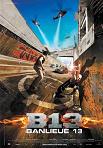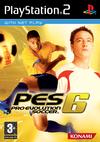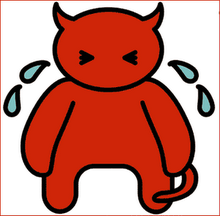 Telltale Games
Telltale GamesSam And Max: Episode 1 - Culture Shock
[Adventure]
Could any game possibly measure up to the anticipation created by 13 years of false hopes and cancellations? Released in 1993, "Sam and Max Hit the Road" was one of the most idiosyncratic and entertaining games ever made. The point-and-click adventure, based on the comic strip of the same name, featured an anthropomorphic duo of a canine shamus and a psychopathic bunny, touring corny tourist spots across the US in a seemingly indestructible DeSoto. The combination of the pair's unique brand of wordplay and senseless violence with a satirical broadside targeting pop cultural vacuity proved popular, and the game has remained a cherished fan favourite ever since, eclipsing the popularity of the comic or the short lived TV show.
The road to a follow up, however, has been long and arduous. The developers, LucasArts, announced a sequel in 2002, which soon got canned as the company decided to stop making critically acclaimed adventure games and start pumping out cheap Star Wars releases like a bilge pump (The only decent Star Wars titles since "The Phantom Menace" came out having been 3rd party.) A totally seperate FPS take on the characters was then in development, then abandoned, and then a German publisher tried to buy the canned sequel from LucasArts, and failed dismally.
Fortunately, LucasArts' rights to the characters soon expired and reverted back to the comic's creator, Steve Purcell, who then promptly licensed the characters to Telltale Games, a splinter group of disgruntled ex-LucasArts staff and others, who have now, thirteen years later, proceeded to create a fitting comeback for the series.
Culture Shock feels both retro and revolutionary. From the pitch perfect (and now 3D) artwork to the excellent jazz score, Sam and Max Episode 1 fills the veteran with a warm 1993 glow. And yet, this isn't just some hazy trip down memory lane, content to rest on the laurels of former years. The most radically progressive move is the episodic nature. This episode is only part one of an ongoing TV-style series of six; one to be released each month. Hence, it's only as long as a movie; you'll get about three hours of play time out of the game, but it does have replay value built into the various humorous options the player can take. The series is going to follow a larger story incorporating the individual cases. You can pick up all the episodes on Telltale's website for about £20, given the US exchange rate, which works out at about £3.50 an episode; very reasonable given how much fun you'll have.
The plot of this episode stays almost entirely within the confines of Sam and Max's immediate neighbourhood, although future episodes are set to expand the locations. A group of washed up 70s childstars called the "Soda Poppers" are terrorizing the neighbourhood with random acts of vandalism and shopdropping. Of course, it's up to the duo to find out what's going on; I won't spoil the story, but suffice to say, it's delightfully weird. The puzzles, whilst a touch easy, are a real joy to solve; they're warped, but never in the illogical how-was-anyone-ever-supposed-to-figure-that-out way many an adventure game falls for. The voice acting will initially jar; they just aren't the same guys that did Sam and Max from 1993, but pretty soon it becomes unnoticeable.
But whilst all the elements can be broken analysed seperately, what makes Sam and Max: Episode One the best damn pure adventure game since Grim Fandango is unplaceable. Is it the snappy dialogue? The perfectly structured plot arc? The art? Well, yes, all these things, but it's more than that. Not only does it get everything right, it also does it and gives the impression of ease. Like a great stand-up comic, it's always sharp, always on, but never fells forced or like it's trying too hard. Maybe the size is a blessing - it just feels like three hours of unadulterated fun, playful and witty, that leaves you wanting more. They say when a great sitcom begins, the first episode often feels a little weird, with all the ground rules and characters it has to establish. Hopefully when more of this, arguably gaming's first sitcom, follows, it'll be even better - because it's already off to a flying start.
95









